I followed the guidelines for textual elements design as described in Gutierrez (2014) and Webster (2018) to maximize readaility of the moose article.
First, I read the article in its entirety, then I created some headings and subheadings to organized the content.
Second, I placed related content under the same subheading accordingly, at the same time I put them into bullet points so it is easier to read. I organized information about moose population into a table format to improve readability.
Third, I adjusted the font and sizes based on the guidelines. I also added some relevant graphics to add visual interest to the content.
MOOSE
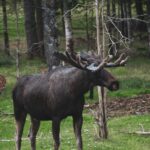
The moose is a member of the New World deer subfamily and is one of the largest and heaviest animals in North America. It is common in areas such as Canada and Alaska. The moose is best known for its gigantic body size and impressive antlers. The sighting of moose during one’s trip can be an exhilarating experience.
Physical Appearance
Weight: Typically weighing 360 kg (794 lb).
Height: 5 to 6.5 feet at shoulder.
Antlers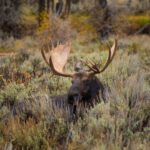
- Broad and palmate (flat) with tines (points) along the outer edge.
- Male’s antlers grow as cylindrical beams projecting on each side of the head at right angles to the midline of the skull, and then fork.
- The lower prong of this fork may be either simple, or divided into two or three tines, with some flattening.
- Bull moose use dominant displays of antlers to discourage competition and will spar or fight rivals.
- The size and growth rate of antlers is determined by diet and age; symmetry reflects health.
- By the age of 13, moose antlers decline in size and symmetry.
- The widest spread recorded was 210 centimeters (83 in) across.
-
-
-
- An Alaskan moose also holds the record for the heaviest weight at 36 kilograms (79 lb)).
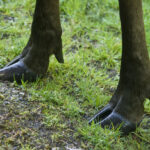
FEET
- Have two large keratinized hooves corresponding to the third and fourth toe, with two small posterolateral dewlaps (vestigial digits), corresponding to the second and fifth toe.
- The hoof of the fourth digit is broader than that of the third digit.
- The inner hoof of the third digit is longer than that of the fourth digit.
- This foot configuration may favor striding on soft ground.
- The moose hoof splays under load, increasing surface area, which limits sinking of the moose foot into soft ground or snow, and which increases efficiency when swimming.
DIET
- includes both aquatic plants and terrestrial vegetation consisting of forbs and other non-grasses, and fresh shoots from trees such as willow and birch.
- These plants are rather low in sodium, and moose generally need t
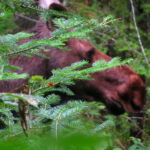 o consume a good quantity of aquatic plants.
o consume a good quantity of aquatic plants.
- Aquatic plants provide the moose with its sodium requirements, and as much as half of their diet usually consists of aquatic plant life.
- Often drawn to roadways, to lick salt that is used as a snow and ice melter in winter.
- Needs to consume 9,770 kcal (40.9 MJ) per day to maintain its body weight.
- Can eat up to 32 kg (71 lb) of food per day.
Habitat
- Require habitat with adequate edible plants (e.g., pond grasses, young trees and shrubs), cover from predators, and protection from extremely hot or cold weather.
- Typically inhabit boreal forests and temperate broadleaf and mixed forests of the Northern Hemisphere in temperate to subarctic climates.
- Travel among different habitats with the seasons to address survival requirements.
- Are cold-adapted mammals with thickened skin, dense, heat-retaining coat, and a low surface:volume ratio, which provides excellent cold tolerance but poor heat tolerance.
- Survive hot weather by accessing shade or cooling wind, or by immersion in cool water.
- When heat-stressed, moose may fail to adequately forage in summer and may not gain adequate body fat to survive the winter.
- Require access to both young forest for browsing and mature forest for shelter and cover.
- Also require access to mineral licks, safe places for calving and aquatic feeding sites.
- Select habitat on the basis of trade-offs between risk of predation, food availability, and snow depth.
- Avoid areas with little or no snow as this increases the risk of predation by wolves and avoid areas with deep snow, as this impairs mobility.
Populations
Currently, most moose are found in Canada, Alaska, New England (with Maine having the most of the lower 48 states), Fennoscandia, Baltic states, and Russia.
Table 1. Moose Populations in Various Countries
| Country |
Number of Moose |
Note |
| Canada |
500,000 to 1,000,000 |
|
| US |
300,000 |
|
| Finland |
115,000 |
2009 figure |
| Norway |
120,000 |
|
| Latvia |
21,000 |
2015 figure |
| Estonia |
13,260 |
|
| Poland |
2,800 |
|
| Czech Republic |
50 |
|
| Russia |
600,000 |
2007 figure |
| Sweden |
300,000–400,000 |
Around 100,000 are shot each fall. About 10,000 are killed in traffic accidents yearly. |
PREDATORS
- Most common moose predators – gray wolf, bears and humans.
- Predators for a full-grown moose: Siberian tigers, packed gray wolves, brown bears.
- American black bears (Ursus americanus) and cougars (Puma concolor) can be significant predators of moose calves in May and June.
- Wolverine (Gulo gulo) are most likely to eat moose as carrion but have killed moose, including adults, when the large ungulates are weakened by harsh winter conditions.
- Killer whales (Orcinus orca) are the moose’s only known marine predator as they have been known to prey on moose swimming between islands out of North America’s Northwest Coast.
BEHAVIOUR
- Not usually aggressive towards humans.
- Can be provoked or frightened to behave with aggression.
- May act aggressively when denied food If used to being fed by people.
- Bull moose may be aggressive toward humans during the fall mating season due to the high hormone levels.
- Not territorial; will usually not pursue humans if they simply run away.
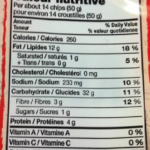




 o consume a good quantity of aquatic plants.
o consume a good quantity of aquatic plants.


Recent Comments